#True Detective: Night County
Explore tagged Tumblr posts
Text
WLW January Entertainment Rundown
Movies
youtube
Update: According to people who have seen the movie Regina is not gay in the new Mean Girls movie but Auliʻi Cravalho as Janis will be and we can't wait to see it in theatres January 12
youtube
The lead of the new Purge movie, Founder's Day is very much gay, January 19, 2024
TV
youtube
Hightown, 26 January
Chaser Game W Power Harrassment Boss Is My Ex-Girlfriend is the first ever gl produced by TV Tokyo. Premieres on January 8.

Law & Order: Organized Crime returns January 18
youtube
True Detective: Night County: Season 4, Max, January 14
Isabelle Star LeBlanc is Liz’s queer daughter Leah Danvers.
youtube
Hazbin Hotel: Season One, January 19, Amazon Prime
youtube
Skymed season 2, Paramount+, January 11
youtube
Death and other details drops January 16
Books, music, video games and more

Don't Want You Like a Best Friend: A Novel (The Mischief & Matchmaking Series Book 1) comes out January 9, 2024.
youtube
The Last of Us 2 Remastered comes out January 19, 2024

January 12, 2024 Mean Girls 2024 movie soundtrack
#Chaser Game W Power Harassment Boss is My Ex-Girlfriend#chaser game w#January#2024#hightown#mean girls#mean girls 2024#mean girls the musical#the last of us 2 Remastered#Don't Want You Like a Best Friend#Law & Order: Organized Crime#lesbian#gay#lgbt#lgbtq#rundown#wlw#bi#girls who like girls#lgbtqia#sapphic#tv#movies#video games#True Detective: Night County#skymed#Youtube#founder's day#death and other details#hulu
75 notes
·
View notes
Note
If I may ask, what would the roles of the Ghost Council and Jinx be in the Werewolf AU?
Also, was Scratch being bitten and turned into a werewolf an accident like Molly's transformation into a werewolf was or did whoever bit Scratch do it on purpose?
Jinx would definitely be a werewolf. I imagine she has a position of authority as a human but she enjoys being a werewolf more and can’t fathom why someone would want to give that up. She’s encountered Scratch a few times as a werewolf but I’d imagine that he’s managed to avoid her detection as a human. Plus she’s well aware that werewolves are not supposed to create more werewolves at this time (especially children!werewolves), so there’s a certain matter concerning Molly, who poses a huge risk for the werewolves until she gets herself under control. Also, Jinx has no issues with killing humans who get too close to the truth about her.
The council is something I’m mixed about and I don’t know what is funnier-them being part of a governing council over the county Brighton is in (and causing more harm than good which sadly is true for a lot of counties) or if they are werewolves too, and give Scratch more of a reason to keep the biting incident a secret.
Now as for Scratch/Todd…
It was more of a case of being in the wrong place at the wrong time. He had one of his depression episodes and decided to stop by the woods for a bit to try to clear his head, but made the mistake of being out too long on a full moon night, despite the warnings. The mystery attacker saw him as a target and attacked, and Scratch barely escaped with his life. He was in for a nasty surprise the next month and almost killed someone himself, which is something he deeply regrets and is one of the reasons why he forced himself to try to control that part of him.
Scratch has tried to figure out who it was but still doesn’t know. The few werewolves he does know confirmed that they don’t know who it was, but they have a feeling that there is a werewolf who is attacking and even killing with little regard to the consequences (especially how they can endanger the others), and could be responsible for turning more people into werewolves beside Scratch.
And that particular werewolf is still out there…. And it’s only a matter of time before they come back to Brighton to continue their hunt.
(Before anyone asks… no it’s not Jinx, even though she is a suspect within the AU for awhile.)
#the ghost and molly mcgee#asking some good questions here#tgamm werewolf au#scratch the ghost#todd mortenson#tgamm jinx
21 notes
·
View notes
Text
Best Friends: Arrow 1x19 Review (Unfinished Business)
“Unfinished Business” takes a hard look at Oliver’s friendships with Tommy and Diggle, as one relationship crumbles and the other finds stronger footing – after a few missteps.
Prepare yourselves. I might write about the flashbacks this week because Shado provided an information download which was sorely needed.
Let’s dig in…
Oliver and Tommy
Oliver revealed his true identity to Tommy three episodes ago and it feels like their friendship has been a bomb waiting to explode ever since. A girl who partied at Verdant dies from a Vertigo overdose, which puts Quentin hot on Tommy’s trail and Oliver hot on The Count’s. This poor girl sadly is the catalyst for the explosion between Tommy and Oliver we’ve been waiting for.
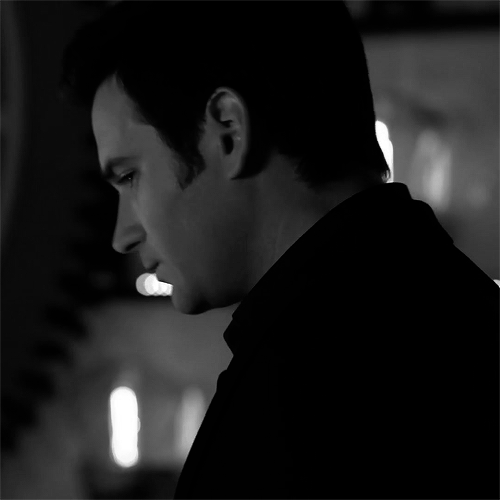
The “evidence” that convinces Quentin Tommy is dealing Vertigo isn’t exactly irrefutable. The girl texted Tommy before she died, which Tommy easily explains because he receives texts from hundreds of people every night trying to get into the club. Her request for a “hook up” is not for Vertigo as Quentin believes.
The second piece of evidence raises the eyebrows, but Tommy has an explanation – albeit a shady one. There is ten thousand dollars missing from Verdant’s operating budget. Quentin believes Tommy used it to buy Vertigo, but he used it to bribe the zoning commissioner into skipping their inspection. Bribery isn’t great, but it’s a far lesser crime than dealing a deadly drug. L*urel could drive a truck through all that room for reasonable doubt.

This episode is another Merlance highpoint. L*urel believed in Tommy one hundred percent and he called her baby. Just leave me to my grave to die a happy woman.

After Tommy refuses Quentin entry into Verdant without a warrant, the detective comes back with one and it leads to a heart stopping moment. He wants to specifically look at the sub level not listed on the inspection’s floor plans. Ever the dutiful detective, Lance pulled the county records and knows it exists.

In my mind, I know this is not the way Oliver’s vigilante hideaway is getting discovered, but the panic in Oliver’s eyes always sends me to Stressville USA. Especially when he types the code!!! He’s shooting those panicked looks at Tommy who is as cool as a cucumber.
Quentin enters the The Hood's bunker and there’s no bunker! How Tommy moved all that equipment and replaced it with bottles of booze I will never understand. We simply have to believe in the magic of television y’all. Tommy is not going to rat Oliver out and he quite literally saves his ass.
Something Oliver should have known, but his lack of faith in Tommy is evident. It’s something Tommy cannot tolerate, not after everything that’s happened between them. He cannot believe Oliver thought he was dealing drugs out of the club.
Oliver doesn’t understand why Tommy wasn’t honest about the bribe. Oliver loses me right off the bat. Team Tommy all the way. Let’s list out the things you have not told Tommy, Oliver and we’ll see who has the longer list. YOU HID YOUR SECRET SUPERHERO LAIR IN THE CLUB YOU OPENED WITH TOMMY AND NEVER TOLD HIM ABOUT IT. A bribe is chump change in comparison to that lie.
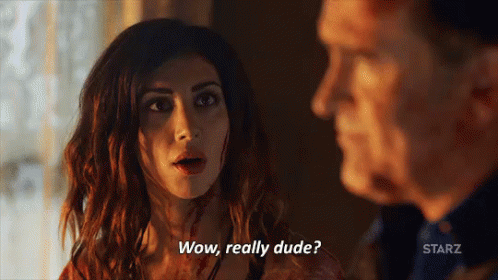
Tommy: Let me ask you a question, pal. What have I done in the last six months since you’ve been home that would lead you to believe that I would sell drugs?
Oliver: In the last six months? Nothing. But before I left you played hard. You played with bad people who were into bad stuff.
Tommy: So, did you Oliver. But I changed just like you did. Now you put arrows in people who do bad things.
Oliver gets owned in this argument, because Tommy is right. He refuses to see that Tommy has truly changed, but still expects Tommy to understand he has.
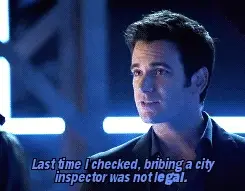

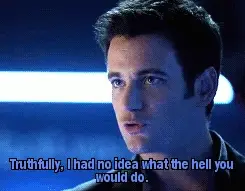

Source: @htbthomas
Oliver’s changes are a tougher pill to swallow. Tommy cannot understand how Oliver can kill people so easily and, quite frankly, wasn’t one hundred percent sure he wouldn’t end up with an arrow in him if he told Oliver about the bribe.
Is this insane for Tommy to be wondering? No, I don’t think so. We know Oliver doesn’t kill easily. We know he’s fighting a nightly war and there is a steep cost to this mission.
However, Oliver has not opened up to Tommy about what happened the five years he was away and he’s not Mr. Joe Here’s What I’m Thinking about being The Hood today. Killing is something Tommy cannot understand, but Oliver expects him to accept it with little to no explanation. Then he has the nerve not to trust Tommy? Seriously?

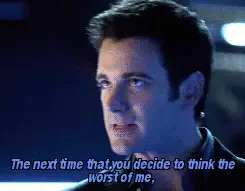


Source: @htbthomas
What Tommy thinks of him is a verbal gut punch to Oliver, but he deserved it. Unfortunately, this fight is not one Oliver can fix with a simple apology. Tommy has reached his limit and who can blame him.
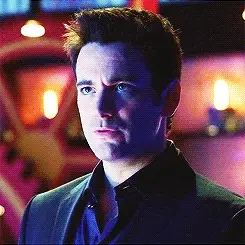

Tommy: This club is important to me, but to you it’s just a front. You want me to keep your secret, help you be this thing you’ve become, but you refuse to see me for what I’ve become. I’ve got just a bit too much self-respect for that. I quit.

BOOM. YASSS MY SON!!! Way to stand up for yourself Thomas. I was so proud of him telling Oliver where to stick it.
Tommy: I’d prefer we skip the I-told-you-so’s, but the nightclub wasn’t really working out. I guess I need something more boring, stable… I guess what I’m saying is - I need a job.

TOMMY WHAT ARE YOU DOING??!!! WORST. DECISION. EVER.
Tommy is back in the arms of the Big Bad Malcom Merlyn. For one brief shining moment, Tommy stood tall on the moral high ground, but not five seconds later comes plummeting back down to work with the sludge of the earth.
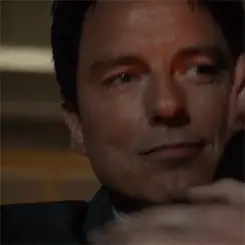
Source: @fogsblue
Tommy has every right to be pissed at Oliver, but his father is not the answer. That man is a hellscape. Whatever positive changes Tommy has made he is in real danger of a serious backslide. Now that Tommy is on the outs with Oliver, Merlyn can lead his son right to his very own villain origin story. And Tommy may lose sight of who he really is.
Oliver and Diggle (Felicity)
Oliver is firing on all cylinders tonight with his bros. After accusing his best friend of being a drug dealer, Oliver pitches a hissy fit over Diggle not being available the second he’s needed.
John is distracted because he’s consumed with avenging his brother’s death and killing Deadshot. While Oliver was trying to stop a hostage situation with a man high on Vertigo, Diggle was handing over information on Deadshot to a friend from ARGUS.

Hello Lyla! This is her very first Arrow appearance. These two had more chemistry in this single scene than any scene with Diggle and Carly. I don’t know what obsession this show has about siblings dating the same people, but it’s enough already. I have to deal with this crap on The Vampire Diaries.
Oliver is furious Diggle ignored Felicity’s phone call. John hilariously tells Oliver not to get his panties in a twist. He’s completely fine. Oliver pretty much puts his hands on his hips and says, “You couldn’t have known that!” They sound like an old married couple.
John is a little put out Oliver is not more understanding. He thought Oliver would understand his vendetta against Deadshot, since Oliver is walking around with a whole damn list of names from his father! But that’s right. It’s a mission. Not a vendetta. Where’s Helena? We need her around if we’re debating this again.

Diggle chooses to be more specific and reminds Oliver The Count almost killed Thea, so his fervor over getting this drug and criminal off the streets may be a little personal too. Oliver says nothing because it’s true.
Diggle: I can’t move on with my life knowing that he’s still out there. I thought if anybody got that it’d be you.
Oliver doesn’t say anything here either because that’s true too. #TeamDiggle.
Felicity and Oliver discover there’s a new antipsychotic drug added to Vertigo, which makes Oliver believe The Count didn’t break out of the asylum like he thought. Maybe he faked his escape like he faked the crazy.
Close, but no. The Count really is three paper plates short of a picnic. It’s his DOCTOR and a very burly orderly who are manufacturing Vertigo. Honestly, I did not see that one coming.
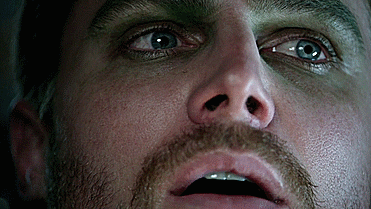
It’s a Vertigo episode, so Oliver is getting drugged, but this time Diggle does show up to save him. He takes out the horse sized orderly, and Oliver kills the doctor with three arrows. It’s not often The Hood requires more than one to get the job done, but his vision was a bit wonky, so he used three just to be on the safe side.
Both the orderly and the doctor had to die because they knew Oliver Queen was The Hood. Those are the rules. The interesting choice Oliver made was not to kill the Count, who is babbling like a toddler on a telephone.
Arrow uses this moment to draw a very important distinction between Diggle and Tommy. After the boys return home, Oliver wants to know if Diggle is ok. He’s the killer in this family, not John.
Diggle: I’ve killed before Oliver. It’s just been a while.
There is no judgment from either man. It’s just quiet acknowledgement that killing is necessary sometimes. But that doesn’t make it easy.
Tommy’s anger towards Oliver makes him blind to his humanity. Oliver is not a psychopath. He does not kill for the enjoyment of it. He is doing what is necessary to save the city from some really bad people. Tommy takes it too far believing killing is easy for Oliver. He’s furious Oliver doesn’t see the change in him, but the truth is Tommy doesn’t see the change in Oliver either.
This is something Oliver never had to explain to Diggle. John does see the change in Oliver. He stood by quietly as Oliver grappled with killing The Count. Diggle didn’t make any speeches. He simply left space for Oliver to make that decision on his own.
If Oliver chose to kill The Count, John would’ve understood that choice as well. He wouldn’t call him a murderer. John encourages Oliver to make different choices, but he also meets Oliver where he’s at. Maybe Oliver would open up more to Tommy if he offered less judgment like John Diggle.
Diggle is curious why Oliver didn’t kill The Count and he tells him the truth. There just didn’t seem to be a point with the Count chained up and lost to madness.
There are two things Oliver is not saying. He was convinced earlier in the episode that he made the wrong decision allowing The Count to live and was just a teensy bit mad.
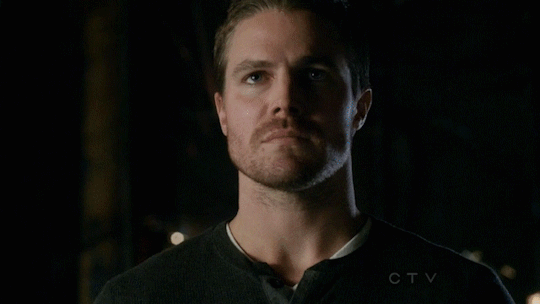
Source: @lucyyh
But he couldn’t fire the arrow in the end.
Felicity’s gentle reassurance that locking The Count up was the right call hit her intended mark. If killing is truly a last resort, then Oliver has to utilize other methods of dealing with criminals. Oliver has shown more restraint ever since Felicity joined the team. He hasn’t stopped killing, but he does listen to her.
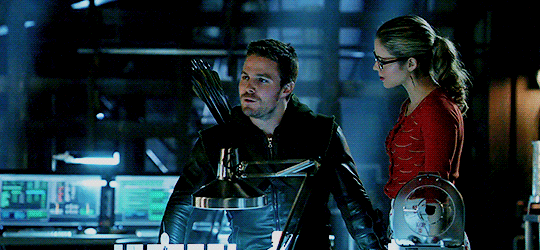
Source: @lucyyh
The second is Oliver believes killing an unarmed man in that condition would be wrong – like stabbing someone in the back. He’s not a threat in that condition and The Count truly didn’t have anything to do with the Vertigo being unleashed on the city again. There are rules to war and those rules keep his humanity intact.
John Diggle has Oliver’s back, so in return Oliver will have his and is making Deadshot a top priority. Couldn’t we have just done that from the beginning and skipped their couples fight?
Neither Oliver or Tommy can see the other for who they truly are. Yet, people Oliver met barely a year ago have more faith in him than his childhood best friend and vice versus. Sometimes history stops us from allowing change in the people we love.
You can see why Oliver is keeping his identity secret from his family and L*urel. It's not just about their safety. He's afraid they will all react like Tommy.
But there's no baggage with Diggle and Felicity, so Oliver has a clean slate. They can see Oliver for who he truly is. It's becoming clearer with every episode that Diggle (and Felicity) are Oliver's best friends.
Shado
Like Felicity, Shado is a breath of fresh air to Team Island. She is beautiful, kicks ass and knows a thing or two about a bow. Oliver has been helpless majority of the time. I am not expecting him to become a super secret agent man like Slade Wilson in a couple of months, but he does need to perform a function on this team other than dead weight.

Shado takes it upon herself to teach Oliver how to shoot, but she does not start with the bow. She begins by telling Oliver to slap a bowl of water. Like the idiotic American he is, Oliver is annoyed, but doesn’t really have anything better to do, so he slaps the water in the bowl. By episode end, his hand is strong enough to pull the bow string. This woman accomplished more in a day than Slade Wilson did in months.

She also provides some much-needed Yao Fei backstory. He was general in the People’s Liberation Army (the Chinese communist army). The military committed a massacre and chose Yao Fei to take the blame. They sent him to Lian Yu for the rest of his life. Fryers knows this and wants Yao Fei to take the fall for whatever he’s going to do.
And we thought The Count was nuts.

Source: thearrowgifs
As for Shado, she spent years searching for her father. A man told her he knew where Yao Fei was, but kidnapped her instead and brought her to Lian Yu as leverage over Yao Fei. It took nineteen episodes to get that information. Yeesh.
Shado: I’m worried, this island, what he must have had to do to survive. That it changed him.
If this sounds ominous it’s supposed to. Not all change is good. That’s true for all of us - even Oliver Queen.
Stray Thoughts
“You could’ve just said he was nuts.” I like sassy Quentin.
Maybe it’s my whole Buffy history, but Shado and Slade sparring felt very sexually charged.
Budget cuts and the CAMERAS are the first to go in jail?!!!
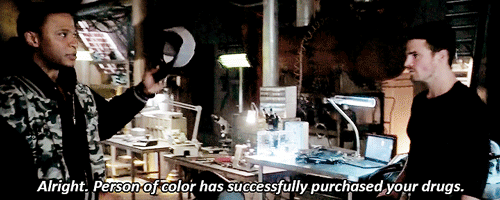
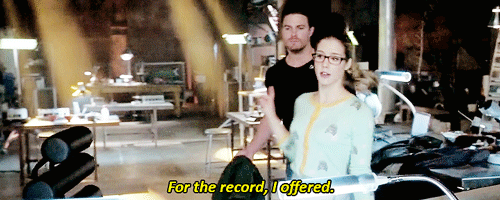
This will always be one of Diggle's best lines.
TOMMY HAS FELICITY’S PHONE NUMBER. Oh, the fics this detail launched.
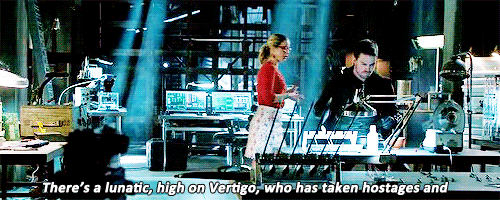

What did we ever do in the bunker without this perfect gumdrop of a human being?
“What’s happening now isn’t your fault.” Felicity should’ve tattooed this on Oliver’s arm. It would save a whole lot of time.
“My mom does yoga.” Ollie is just so… Ollie.
1141 is the passcode to the bunker. The Green Arrow was created November 1941 (11/41).
Listen to the Watchover podcast reaction to 1x19!!!
If you’d like to support the blog, please buy me a cup of tea!
Disclaimer: Any gifs on the blog are not mine. If you would like a gif removed from my reviews, please message me
#arrow#arrow 1x19#arrow review#arrow reviews#olicity#oliver and diggle#oliver and felicity#ota#original team arrow#tommy merlyn#oliver and tommy#anti laurel lance#merlance#arrow season 1#arrow rewatch#olicity fandom#arrow fandom#season 1 episode review#season 1 episode reviews#lyla michaels#dyla#malcolm merlyn
21 notes
·
View notes
Text
🍿 ALL the movies I’ve watched this year (2024) 🎬
Be prepared, it’s kinda a few
This includes rewatches and movies I forgot to rate earlier lol
Maniac Cop (1988) 4/10
A Yankee in King Arthur’s Court (1949) 8/10
Blade Runner REWATCH (1982) 8/10
Beastmaster 2: Through the Portal of Time (1991) 6/10
The True Story of Jesse James (1957) 5/10
Charro! REWATCH (1969) 7/10
Indiana Jones and the Dial of Destiny (2023) 7/10
The Wraith (1986) 4/10
Dreams with Sharp Teeth (2008) 9/10
Star Wars Episode IV REWATCH (1977) 8/10
Star Wars Episode V REWATCH (1980) 8/10
Star Wars Episode VI REWATCH (1983) 8/10
The Car (1977) 4/10
Flash Gordon (1980) 6/10
Oppenheimer (2023) 6/10
Barbie (2023) 6/10
Killers of the Flower Moon (2023) 6/10
Made for Each Other (1939) 5/10
Dark Star (1974) 6/10
The Pirates! In Adventure With Scientist (2012) 8/10
Robin Hood REWATCH (1973) 8/10
Best Friends (1975) 5/10
Electric Dreams (1984) 8/10
Star Wars Episode I REWATCH (1999) 7/10
Barbarian (2022) 3/10
Silence of the Lambs REWATCH (1991) 8/10
Child’s Play (2019) 8/10
Dark City (1998) 8/10
Star Wars Episode II REWATCH (2002) 7/10
Star Wars Episode III REWATCH (2005) 8/10
The Simpsons Movie REWATCH (2007) 6/10
Risen (2021) 2/10
The Sicilian Clan (1969) 7/10
Renfield (2023) 4/10
Ordinary World (2016) 9/10
Centurion (2010) 4/10
Nomads (1986) 4/10
City Heat (1984) 7/10
Sinbad Legend of the Seven Seas (2003) 7/10
Night at the Museum REWATCH (2006) 9/10
Night at the Museum 2 REWATCH (2009) 8/10
Night at the Museum Secret of the Tomb (2014) 8/10
Escape from New York REWATCH (1981) 7/10
The Mechanic (1972) 5/10
One Hell of a Guy (1998) 8/10
The Rocketeer (1991) 7/10
Never Too Young to Die (1986) 5/10
Peter Pan (1953) 6/10
The Batman (2022) 5/10
Attention, les enfants regardent REWATCH (1978) 10/10
Labyrinth REWATCH (1986) 10/10
The Great Mouse Detective (1986) 8/10
Lisa Frankenstein (2024) 8/10
Rise of the Guardians REWATCH (2012) 8/10
Treasure Planet REWATCH (2002) 8/10
Inkheart (2008) 6/10
Howl’s Moving Castle (2004) 9/10
Chicken Run REWATCH (2000) 8/10
Chicken Run Dawn of the Nugget (2023) 7/10
Fantastic Mr Fox REWATCH (2009) 8/10
Five Nights at Freddys (2023) 6/10
Zachariah (1971) 7/10
To Wong Foo Thanks for Everything REWATCH (1995) 9/10
Two Minds for Murder (1971) 6/10
The Secret of the Sword (1985) 7/10
After Alice (2000) 7/10
Smurfs The Lost Village (2017) 5/10
Inside Out 2 (2024) 6/20
Surfs Up REWATCH (2007) 8/10
The Swan Princess (1994) 7/10
Jimmy Neutron Boy Genius (2001) 7/10
The Spongebob Squarepants Movie (2004) 7/10
Flushed Away (2006) 6/10
The Rugrats Movie (1998) 8/10
Lethal Weapon REWATCH (1987) 8/10
Rugrats in Paris (2000) 7/10
Oliver and Company (1988) 6/10
The Last Unicorn (1982) 6/10
Lethal Weapon 2 REWATCH (1989) 8/10
Tootsie (1982) 8/10
The Best of Times (1986) 5/10
Paperback Hero (1999) 7/10
The Asphyx (1972) 5/10
Unlawful Entry (1992) 7/10
Vampires Los Muertos REWATCH (2002) 9/10
Jackpot! (2024) 3/10
The Minion (1998) 4/10
The Punisher REWATCH (1989) 6/10
Kindergarten Cop REWATCH (1990) 8/10
Charlie and the Chocolate Factory REWATCH (2005) 6/10
Mr Nanny (1993) 3/10
A Night in Heaven (1983) 5/10
Jack Reacher Never Go Back (2016) 5/10
Playing with Fire (2019) 6/10
Rebel Ridge (2024) 7/10
Cutting Class (1989) 5/10
Rocky IV REWATCH (1985) 8/10
Dollman (1991) 4/10
The Return (1980) 4/10
A Change of Place (1994) 4/10
Wolfs (2024) 6/10
The Condemned 2 (2015) 4/10
12 Rounds 2: Reloaded (2013) 6/10
See No Evil (2006) 4/10
Suburban Commando (1991) 6/10
90 Feet From Home (2019) 6/10
The Killer’s Game (2024) 4/10
Deadly Cuts (2021) 8/10
The Boys from County Hell (2020) 7/10
Butcher Baker Nightmare Maker (1981) 6/10
See No Evil 2 (2014) 3/10
Let the Wrong One In (2021) 8/10
Once Upon A Texas Train (1988) 5/10
Twins (1988) 7/10
Phantom of the Opera (2004) REWATCH 7/10
The Sword and the Sorcerer (1982) 5/10
Thursday’s Child (1983) 6/10
That Christmas (2024) 8/10
The Polar Express (2004) 5/10
The Chaperone (2011) 8/10
5 notes
·
View notes
Text
True Detective
Night county is pretty great. I love the dark turn to it. It almost reminds me of the thing and the cast is all great too
3 notes
·
View notes
Text
The ending of True Detective: Night County was slightly disappointing.
5 notes
·
View notes
Text
We can't believe all that work that he did as an estimator you just don't do anything with him at all and he does a lot of other stuff and you just sitting there doing nothing but harassing it's disgusting it is repulsive I have excuses upon excuses and you get nailed because of it you are a horrible lot terrible. This is perfect example is what happened to Jason and he is undergoing the ceremony now he was put in the dirt it's only six feet and here that's about 50° it's not bad your refrigerator is it like 45 degrees mostly and it's cool and it's been thoroughly and bombed but he is full of germs and they grow a little and there's battle to get them out and he's going to be a sick dummy by the time they get him out and he won't be able to work and Lily will be alone and she'll probably try hiring people and it won't work it's too moist here and they simply won't say that for some reason and it's going to get ugly. And yeah she's the one who came by and it says it to look good knows what's going on and she's saying I don't feel like working today I'm tired and feverish I need to rest Christmas is coming I can't do anything for some reason most of the places that they're checking on are empty the others need minor repairs and they're having difficulty getting it done. There's a large amount of people who are trying to figure out where to go and how to lift that her and survive there this place doesn't seem to be the right place and it isn't they say the radiation levels about 10 minutes ago or up to about 85 and they're still at 84. The traffic a moment and our son says he can't detect it at all at all. And it doesn't know what it's like it's not true but here comes the bus but he is fine so they don't like that it's going to happen two more times today and then about five times tonight up above 80. And this is going to be a recurring theme. Also there's a lot of infighting and it's right outside of Charlotte county and it extends all the way up to 20 mi south of Kissimmee and all the way down to the Everglades practically the whole thing at times it's very dangerous.
--when are the thing is there are about 50 people who are heinous and they did check and they do look like they have severe damage to their brain recent damage that's going on trying to track them down and they're not going to be nice because they are being very mean never can't help it but that's what they're going to do to them
--one more thing we have a bunch of people today and it's going to be a long ride. This is only three stops not bad
--we also have a couple items happening in punta Gorda that are new be sure if it's down there they are fighting with the local police and it's not very good anymore and they're causing trouble and problems and it's getting bigger and they are anticipating the cabin to drama they did see the cover and a good see the rain coming down and going east and they know what happens there's a lot of personnel moving from other armies into the area to secure it a lot of these guys are going to be out and it is about time what a bunch of peevish little assholes okay. They are not going to go far with this kind of attitude.
--this is similar to the procession that happened in California with Chris Kyle and this is in Florida there are two areas where minorities to go to it's kind of deploy one of them but there's something a little bit darker and they're saying they'll come in in the work and it's to their own detriment and it is in the code and it is in the characters and their names and who they are and son of San Diego that's what they're saying and that's Brad his son is Jason and he knows about the shroud and you're talking about me Jersey girl so the night out to lunch completely it is pretty bad and the code is pretty rich and is depressing and things are going to change but it probably harder but they will change soon and people will find that they should help each other
Thor Freya
Olympus
0 notes
Text
19 September 1243
Library of Circlaria
Third Level Society: First Version
Story One: Daniel Orville Carter
Over the past week and a half, I have made no further progress on the investigaton due to what elapsed the moment I returned to the Scalar after my second visit to Fleming House.
When I returned, I decided to test one of my many mechanisms used to detect the presence of darkfire floans. The moment I turned it on, it began to issue a multitude of alarms. I thought at first that it was a glitch in the mechanism itself. But when I turned on another machine, which I named the syphondrome, I realized that the first device told no lies. I had been exposed to a large amount of darkfire.
I cannot determine how long I had been exposed, but I do remember, on the rainy night I ventured in the woods, becoming disoriented. I should have known then that such disorientation was one of the classic signs of being under the influence of darkfire. But of course, that would have required my own judgement, which, as for anyone else, is influenced in part at least by emotion.
And my emotions were under sway by the very same darkfire influence. It was a wonder I felt so vulnerable and irrational when the Chaplain had turned against me in the University Council meeting.
So I immediately went to the Hospital. Not the University Hospital but the one in the center of the town of Cabotton proper. For some reason, I have had a bit of foreboding when it comes to putting myself in the care of others in this way at the University. Perhaps it's a lingering effect of the darkfire influence, but it's not something to impact my decisions too severely. In any case, the nurses and doctors, as well as the other staff, did a superb job cleaning the darkfire out of my system that I was able to return to the Scalar by Friday.
Unfortunately, even my speedy recovery does not cast hope on the prospect of this investigation.
Upon my return, I picked up a package sent to me by Headmaster Snow. It contained a short letter informing me of my standing in terms of reputation of the University student body, as well as the daily copies of the Flagstaff. Word spreads fast at the University. I had informed both Winsley and the Headmaster of my darkfire exposure, but it appears that someone may have overheard; and my story became popular.
The Chaplain capitalized upon this and convinced the University Council to vote against its portion of the commission being paid to me, under the pretense that my diagnosis was confirmation that I had been "corrupted by the sway of Darius Weller and therefore could not be trusted to continue the investigation."
That obviously is not true. And why the Chaplain has turned against me in the first place, I am still struggling to understand. But alas, October is only five days away; and I am no closer to finding the outcome of this incident than I was in the beginning. I would need the month of October, I admit. And the University is not giving that to me.
So I will conclude this investigation and fly the Scalar out of Gentry County tomorrow morning. I wish the authorities well in getting to the bottom of this; and I hope for the utmost safety and well-being for Ivella Ogden.
<- 10 September 1243 <- || -> 24 September 1243 ->
1 note
·
View note
Text

"Guard Plante Closely After He Boasts No Jail Can Hold Him," Ottawa Journal. June 12, 1934. Page 7. ---- Search is Being Made For Hidden Weapons ---- Ottawa, Hull and County Police Are Checking Over Cells After Plante Says He Has Concealed Some Hack Saws. ---- Special guards were mounted on his cell at the Carleton County jail last night and a hurried search, was made through prison and police detention cells on both sides of the Ottawa river for hidden "get- away" tools, after Alphonse Plante, 25, of Rideau street, prisoner at the local jail under sentence of 10 years and lashes, jeered at war dens and boasted no lock-up could hold him if he wanted to get free.
Plante is reported to have warned jail turnkeys he had hidden means of escape within the very walls that now hold hold him, that he had a hack-saw concealed in police detention cells at Ottawa police headquarters, that other means of escape were available to him in Hull jail, and that at the prison farm at Burwash. Ont. he had ready at hand two saws to cut his way to liberty if sent there.
Search for Hidden Weapons. An alarm was immediately given to the various police and jail authorities concerned. Search for the concealed "escapes" had not been successful, in Ottawa and Hull at least, while Plante's every move in his jail cell was being carefully watched.
The boastful prisoner even declared he had already cut through one steel bar at a cell at police beadquarters here, but a thorough check-up revealed this was not true.
Governor A. G. Dawson, in charge of the Carleton County jail, said Plante last night was a "model prisoner," which was "sure grounds for suspicion." Governor Dawson said he was taking no chances of the man making a second effort to escape, and that guards would watch him day and night, a special detail being assigned to his cell.
Plante took his sentence in police court yesterday with apparent equanimity, although he had told guards at the jail, while awaiting sentence, that if he was given more than 10 years in the penitentiary he would "never go there." To Detective Jean Tissot, one of the Ottawa investigators foremost in checking his career over a number of years. Plante was stated to have promised to take his own life rather th than endure the ignominy of physical cal punishment which the court imposed as a liberal complement of imprisonment.
It was pointed out that Plante's boast of his hidden means of escape in various prisons might not be an idle one. Hacksaws might easily be concealed in a mere crack in a wall or floor. It was stated, and authorities will continue their searches.
Authorities Taking No Chances. Every cell Plante has occupied from time to time will be gone over until police and warders are certain they do not contain instruments which might assist a prisoner in getting free.
During the short legal delay before Plante can be removed from Ottawa to Kingston penitentiary to serve his term, Carleton county jail authorities intend to give him no chance of slipping through their. fingers.
Emile Piche, his partner in the attack on the local jailer in a frustrated attempt to get away from the Carleton County jail, and now waiting removal to Kingston penitentiary to serve two years for the offence, was giving authorities no cause for uneasiness last night.
#ottawa#armed robbery#armed robbers#jailbreaker#jailbreak#assaulting a prison guard#ex-convict#sentenced to the penitentiary#kingston penitentiary#great depression in canada#crime and punishment in canada#history of crime and punishment in canada#alphonse plante#escape plot#attempted escape#ottawa jail#county jail#hull jail#police investigation
0 notes
Text
THE ECONOMIC IMPACT OF PEST INFESTATIONS: WHY INVESTING IN PROFESSIONAL CONTROL MATTERS
In the quiet corners of Hampden, Franklin, Hampshire, and Berkshire counties in Massachusetts, a silent threat lurks beneath the surface of seemingly serene landscapes—the threat of pest infestations. From rodents scurrying through attics to termites gnawing away at the very foundations of homes, pests can wreak havoc on both residential and commercial properties, leading to significant economic repercussions. Here we delve into the economic impact of pest infestations and why investing in professional control is not just advisable but imperative for homeowners and businesses alike.
Understanding the True Cost
Pest infestations may initially seem like minor nuisances, but their financial implications extend far beyond the surface. Consider this: a single termite colony can cause thousands of dollars in property damage, compromising structural integrity and requiring costly repairs. Similarly, rodent infestations can contaminate food supplies, leading to product loss and potential health hazards. These direct costs of property damage and product loss are just the tip of the iceberg.

Hidden Costs and Consequences
Beyond the immediate expenses of repairing damage and replacing contaminated goods, pest infestations also entail a range of hidden costs. For instance, the presence of pests can tarnish a business's reputation, driving away customers and resulting in long-term revenue loss. In residential settings, the psychological toll of living with pests—whether it's the constant worry about health risks or the stress of sleepless nights—can impact residents' well-being and productivity.
Moreover, pest infestations often trigger regulatory scrutiny and legal liabilities. Health code violations, for instance, can lead to fines and penalties for businesses found in breach of sanitation standards due to pest infestations. In extreme cases, failure to address pest problems promptly can even result in forced closure orders, further exacerbating financial losses.
The Importance of Professional Control
Given the multifaceted economic implications of pest infestations, the value of investing in professional pest control becomes evident. Unlike DIY solutions, which often provide only temporary relief or fail to address underlying infestation issues, professional pest control services offer comprehensive solutions tailored to the specific needs of each property.
At Atlantic Exterminating, we understand the unique challenges posed by pests in the Hampden, Franklin, Hampshire, and Berkshire counties. Our team of skilled technicians is equipped with the expertise and resources to identify, eradicate, and prevent pest infestations effectively. Whether it's implementing integrated pest management strategies or deploying advanced treatment methods, we prioritize long-term solutions that minimize both financial and environmental impact.

Proactive Prevention vs. Reactive Remediation
One of the key principles of effective pest management is proactive prevention. By implementing preventive measures such as regular inspections, sealing entry points, and implementing sanitation protocols, homeowners and businesses can significantly reduce the risk of pest infestations before they escalate into costly problems.
Furthermore, investing in ongoing pest management services offers peace of mind and long-term cost savings. Rather than waiting until pests have already established a foothold, proactive pest control measures allow for early detection and intervention, mitigating the potential for extensive damage and associated expenses.
In the battle against pest infestations, the stakes are high, and the economic consequences are profound. From property damage and product loss to regulatory fines and reputational damage, the costs of ignoring pest problems can quickly spiral out of control. By recognizing the economic impact of pest infestations and investing in professional control services, homeowners and businesses can safeguard their assets, protect their bottom line, and ensure a safer, healthier environment for all.
For comprehensive pest control solutions in Hampden, Franklin, Hampshire, and Berkshire counties, trust Atlantic Exterminating. Contact us today at 66 Mountainview St, Ludlow, MA 01056, United States, call (413) 747-7828, or email us at [email protected] to schedule a consultation. Don't let pests jeopardize your financial well-being—let us help you reclaim your peace of mind.
#PestControl#EconomicImpact#ProfessionalPestControl#PublicHealth#EnvironmentalImpact#CostSavings#BusinessRisk#HealthSafety#Sustainability#IntegratedPestManagement#FoodSecurity#RiskManagement
0 notes
Text
0 notes
Text

REVIEW
The Night I Died by Anne Frasier
This wasn’t easy for me to get into, so I read reviews for the book and found a mixed bag that included some that were glowing and some that were quite the opposite…so…I read the end and took time away from the story and then went back in to try again rather than giving up as I thought about doing. And I did finish the book and came away feeling better about it than I did in the first few chapters.
What I liked: * Olivia Welles: survivor of a train wreck, flat-lined/died more than once, private investigator, actress, dog lover, has holes in her memory, intelligent, liked her but also felt a bit sorry for her
* Will LaFever: journalist, has big writing goals, one-time swimming athlete, interested in the possible multiple child killings that took place in Finney County, intrigued by Olivia
* Dorothy: a rescue dog that Olivia takes under her wing
* Ezra: a young man that Olivia took responsibility for who know works for and with her
* The creep-factor of the Kansas town and its citizens - how can so many be clueless and blind to some of the goings on in town
* The way the story unfolded…it definitely grew on me as Olivia started to piece things together
* Wondering if there is something in the air or water in some places that increases the number of killers
* Wasn’t sure about the many references to The Wizard of Oz and True Blood. For some they might be wonderful but for others a bit much. I also thought of murders in cornfields and had to look up the movie Children of the Corn and found its setting was neighboring Nebraska and not Kansas
* Thinking about LONG rides from Des Moines to California that went through the flatlands of the Midwest but also remembering some beautiful scenery, too.
* That I actually finished the book
What I didn’t like:
* Who and what I was meant not to like
* Thinking about killers and what motivates them
* That I felt I needed more backstory on Olivia and Will and wondered if this is the beginning of a series and more will be provided later or if I will be left wondering
Did I enjoy this book? Eventually
Would I read more by this author? I think so
Thank you to NetGalley and Thomas & Mercer for the ARC – This is my honest review.
3-4 Stars
BLURB
A mother’s unthinkable crime and an investigator’s forgotten past collide in a shocking novel of suspense by Anne Frasier, the New York Times bestselling author of The Body Reader . Private detective Olivia Welles hasn’t been to her hometown since childhood, not since the night she died. She has no memory of the world before the car crash, or of coming back to life in the morgue. But now, years later, when fellow survivor Bonnie Ray calls from a Kansas jail begging for help, Olivia feels the tug of a dark and unremembered past. Bonnie looks guilty of murdering her young son—the third child to die under suspicious circumstances. Intrigued and seeking closure, Olivia agrees to investigate. Back in the foreboding town where her heart stopped and started again, Olivia finds an unexpected ally in Will LaFever, a journalist with his own motives for uncovering the truth. Together they unearth more than they expect about Bonnie, her traumatized family, and the crime. You’re lucky you don’t remember any of it, Olivia’s father used to say. But Olivia’s luck is running out. This time, escaping Finney County with her life might be impossible.
#Anne Frasier#NetGalley#Thomas & Mercer#Murder#Crime#Kansas#Child Killer#death#train-car wreck#small town fiction
0 notes
Text
Milton Blog
(Inspired by the horror series, The Mandela Catalogue)
Come down, Archangel, bring a hero of justice
A deceiving creature has stolen your place and brings its own cultus
The False Shepard and his army of shapeshifters set off to take over the land
With the world turned upside down, it wouldn’t be thousands of years until humans would notice
His Alternates took away thousands of children; distraught at the sight of their missing infants, mothers could not go on any more
Through disguises, these demons spread distressing words of their leader through victims doors
Face to face with psychological warfare, residents fell into the big sleep
The Mandela County faced terrors unimaginable due to the False Shepard and his deceitful sheep
Come down, true Gabriel, bring this hero messages of hope
He doesn’t know for how much longer he can go on
Almost all of his friends are gone
An evil spirit disguised as the one he failed to protect visits him at night
He understands the safety of the county rests on his shoulders as he looks upon the sad sight
In a town with nobody to trust or support him, the officer is expected to defeat thousands of years of tyranny
Come down, messenger, give this hero the answers
The world is overcome with fear, and the detective cannot pray for its salvation
0 notes
Text
0 notes
Text
This John remillard's guy needs to go he is threatening everybody all the time just in order to bother our son and get rid of his stuff, his own stuff. Ridiculous doesn't receive that's what that dumb a****** is doing I don't want to do it here at all it's it's moronic and it doesn't make any sense and I'm trying to remember what he wants to do that to his own people he should move away and stop blaming my son every 5 seconds I mean he's a freaking idiot I mean why I'm gone.
We hv copies of your AI like everybody else and new ones too I mean disable your program and we ruin your stuff and you know what happens with ease. Have a good ideas to have your computer's attack your people and robots that will be your end, then it happens all the time as tommy F is doing it
Thor Freya
True too this is Tommy f think about 600 trillion robots down the street in the upper Midwest last night and started kicking the s*** out of Trump's guys on here comes robots and jumps guys know what they look like and they blame Trump and he is playing with us laughing and the idiot figured it out then you forgot then you figure it out my husband say you're more on gym because the gas is going to make it right 24 hours a day and there they are doing it. They saw them doing it started calling him out on it and they started yelling at him to get out of there and feel a little more going on if everybody so who's that like this I don't think I have time to watch tomorrow happen. Of course I do and it's going to be interesting because this is what all sorts of idiots come out traffic's a dumb things to try and get him in the hospital they start looking at it like this I usually try going after 4 hours and he's in the hospital it was he as weirdos and that's what they want to do you want to go in the hospital and take the forest jobs and attack us and Mac and they didn't try it much I was originally for us they were not any forms there so the a****** notices that you could detect them so she already knows we have to grab them and other people are saying it to him that they have to answer Jesus it's this idiot Jason and they're fighting each other and he's the one who was there with the supposed Trump any concert a year and it comes to the Jager so there's a bunch of people don't know anything about what they're doing and these people are idiots say stay tuned for the magic show they get their asses kicked usually it's their people who lose big time and they're going to lose tonight that's for sure. They're trying to get here by force. We are repelling them. Serious numbers of them I'm starting to come down the road all over Florida it's a huge pile of these idiots and it is probably five Octillion he's wave and they're 10 ways of them from the south in about 20 from the north and they're going to start trying to force awaken right now and it's in response to the layoffs and to the facts that in a day they're going to be right at the leaders and there's nobody working in the government and they said that was explained and they said we're too but have no one working in any positions of power at all have senses it's pretty much there in Florida except for right here in this asinine area and he said this is terrible I'm stuck here and they have to leave and positive people are leaving oh boy that takes a lot of effort to tell them everyone is leaving I don't talk to anybody.
So far tonight it's probably 80% now we left off it was 75% of government employees were fired by the time he got home it was like 85% so that would definitely reach here wouldn't it? That says getting close that's a lot of workers I really just going to have had people all over the state and they're getting pissed and the people says we really have to talk guys in each state or area it is for county and it is working Macs say.. huge forces are getting up in Florida to try and come here in a way of 7 even happened here so wondering what the hell thier doing. This is an odd thing happening here and have someplace else it's actually an area that's very few minutes is a lot of more likes leaders almost as if we're protecting these people here from them and they're saying no but when they get here most often they go after their own kind as for stuff
I wrote this a while ago but publish it now
Thor Freya
Olympus we certify this message is ours
0 notes
Text
Annals of Medicine: Could Ultrasound Replace The Stethoscope?
Miniaturization, experimentation, and A.I. have unlocked revolutionary potential in an old technology.
— By Clifford Marks | January 20, 2023

Illustration by Nicholas Konrad/The New Yorker
The patient, a man in his early twenties, hobbled into the E.R. on a Wednesday morning, anxious and gasping, his shirt covered in blood. Minneapolis in the nineteen-eighties was experiencing an increase in violent crime that would later earn it the nickname Murderapolis; at Hennepin County Medical Center, the city’s safety-net hospital, stabbings and gunshot wounds had become commonplace. Doctors there had treated dozens of patients with wounds to the chest, and the outcomes had been dismal: roughly half had died, and many survivors suffered brain damage.
The chest contains the heart, the lungs, and the body’s largest blood vessels. The challenge for a doctor is figuring out which, if any, organs have been injured, since each must be treated differently. For decades, medical texts had advocated using a stethoscope for this task: in theory, doctors could use a patient’s breath pattern to detect a collapsed lung, or hear the muffled sounds of a heart filling with blood. But in reality the stethoscope performed poorly in the emergency room. It was dangerous to just treat and hope for the best: by acting without a clear diagnosis, a doctor could harm or even kill a patient, who might turn out to have only a superficial injury.
If the bloodied man at Hennepin had arrived a day earlier, he might have died while his doctors continued to monitor him. But he had stumbled into an experiment. A small group of Hennepin doctors had decided to place an ultrasound machine in the E.R.’s trauma bay, to see if they could quickly diagnose hemorrhaging in the heart. Ultrasound lets clinicians see inside the body in much the same way echolocation allows bats to navigate at night: a probe emits sound waves at a frequency far beyond human hearing, and these waves bounce off bone but pass through fluid, allowing the probe, which is also a receiver, to sense the body’s interior. On an ultrasound screen, bones appear bright white, flowing blood looks black, and most other bodily tissues are visible in different shades of gray.
As doctors and nurses descended on the injured man, someone rolled the half-ton ultrasound machine close and placed its probe on his chest. Sound waves spread imperceptibly through his body, and an instant later his heart filled the screen. It was surrounded by light gray: blood was beginning to suffocate it. The man was rushed to the operating room, where surgeons quickly drained the encroaching blood and repaired the wounds to his heart. He recovered without significant disability.
Ultrasound is an old technology, with roots in the sonar scanners used during the Second World War. For decades, it’s been used mainly to inspect fetuses while they’re still in the womb, and to examine diseased hearts. But, in the past few decades, rapid advances in computer technology, combined with the trial-and-error work of clinicians, have transformed ultrasound into a powerful diagnostic instrument for everything from damaged organs to tuberculosis. If ultrasound’s evangelists are correct, it may soon replace the stethoscope as the quintessential doctor’s tool. Its rise, meanwhile, reveals something about how technology works. In some cases, inventions arrive fully formed. But others reveal their true potential slowly, truly coming into their own with the passage of time.
Sonar uses pings that humans can hear. Ultrasonic frequencies, which are higher and inaudible, were first employed in metal-flaw detectors—machines that shipbuilders used to spot defects in their hulls. At first, it wasn’t obvious how to adapt the technology for medicine. One pioneer tried to use ultrasound to look at the brain; unfortunately, that’s one of the organs least conducive to ultrasonic imaging, since it’s encased in a skull of reflective bone. The first ultrasound machines were enormous, in part because, since air causes ultrasonic waves to scatter, patients had to be submerged in water. (Today, clinicians use gel to create an air-free interface between probe and patient.)
Most ultrasound trailblazers were engineer-physicians with a thirst for experimentation. As a young medical officer in the Royal Air Force during the Second World War, Ian Donald, a British obstetrician, witnessed firsthand the power of both sonar and radar; later, he wondered if ultrasound might be more effective than a physical exam at distinguishing benign cysts from cancerous masses. He persuaded a Glasgow boilermaker to let him turn its metal-flaw detector on two trunkfuls of recently removed tumors, cysts, and fibroids. In 1956, Donald and another young physician, John MacVicar, used a primitive ultrasound machine of their own design on a patient who’d been diagnosed with inoperable cancer. The diagnosis had been based on X-rays and physical exams. The ultrasound, by contrast, suggested that the mass was a large ovarian cyst —a benign growth that could be removed easily through surgery. Doctors removed the cyst, and the patient’s symptoms disappeared.
“From this point, there could be no turning back,” Donald reportedly said. But his colleagues were not convinced. Early ultrasound machines were hard to use and created murky pictures. Donald’s team took the positive step of replacing the water bath with a probe, but used olive oil to bridge the gap between probe and body—a messy proposition for both patient and practitioner. To many doctors, ultrasound seemed like a crutch for those who hadn’t mastered the art of the physical exam. One physician told MacVicar that ultrasound would only be of value “to a gynecologist who was blind and had lost the use of both hands.”
The stethoscope, medicine’s most totemic object, had faced similar obstacles. In 1816, a physician named René Laennec was treating a young woman with cardiac disease; worried about the impropriety of putting his ear directly to her chest, he rolled a piece of paper into a tube, placing his ear at one end and his patient at the other. To his surprise, he found he could hear heart and lung sounds more clearly than with his ear alone. Laennec spent years refining and improving his stethoscope—the name derives from the Greek words for “looking” and “thorax”—before publishing a book describing his findings. But adoption was slow. Critics argued that the tool was too difficult to use, and that the training required was too specialized. Even the Scottish physician John Forbes, who translated Laennec’s treatise into English, wrote that he doubted the stethoscope would “ever come into general use.” It took numerous revisions to the device’s design—early models still resembled rolled-up tubes—and the demonstration of replicable and meaningful results for Laennec and his acolytes to overcome these objections.
In his book “The Diffusion of Innovations,” from 1962, the sociologist Everett Rogers identifies five characteristics that explain the success or failure of new technologies. The most obvious is relative advantage: a new invention must offer a clear improvement over what has come before. But it must also mesh with current practice patterns, be simple to use, and be easy to try out. On those scores, early ultrasound failed miserably. Even into the nineteen-sixties, ultrasound machines remained large and difficult to transport, and required specially trained operators. They produced grainy still images, initially captured on Polaroid film. Obstetricians were open to ultrasound, because they wanted to avoid exposing fetuses to the radiation created by X rays. Other doctors adopted an attitude of wait and see.
The first wave of substantial improvements came through digitization. As silicon chips replaced vacuum tubes, ultrasound benefitted from Moore’s Law; image quality improved dramatically even as the size of the machines shrank. Manufacturers simplified their user interfaces, making the machines accessible to non-techies. In the nineteen-nineties, darpa, the Defense Advanced Research Projects Agency, awarded a grant to design an ultrasound unit that was portable and durable enough to be carried onto the battlefield. In 1999, a company called Sonosite released a commercial version—the first handheld ultrasound device. The race toward miniaturization continued: today, there are ultrasound machines that can plug into your smartphone.
As a technology spreads, experimentation ensues, and new ideas get refined and regularized. In the early nineteen-nineties, Grace Rozycki, then a surgeon at Grady Memorial, a hospital in Atlanta, studied how ultrasound could be used in evaluating trauma patients. “Surgeons recognized rapidity as ultrasound's most valuable quality,” Rozycki told me. She and her colleagues helped pioneer the use of the fast exam—for Focused Assessment for Sonography with Trauma—to allow them to make treatment decisions sooner.
I learned to perform the fast exam as an emergency-medicine intern. I’ll never forget my first patient with a positive scan—a person in their fifties who’d been struck by a car after they lay down in the road, in a likely suicide attempt. The stretcher came careening through the double doors of the ambulance entrance; as it passed the threshold, a nurse rushed to put an I.V. in the patient’s arm, while another connected them to a monitor that began displaying their vitals. In a worrisome sign, the patient was becoming increasingly confused.
I rolled the ultrasound machine to the bedside, squirted some gel across the probe, and placed it on the right side of the patient’s abdomen. Most probes radiate ultrasound waves outward in an arc, and as a result the images have a phantasmagoric quality, as though a flashlight is being shone into murky waters. When the patient’s kidney came into view, it was surrounded by a pool of black—an abdominal hemorrhage. In an instant, we knew that surgery and a blood transfusion could make a life-changing difference.
Many early ultrasound boosters had envisioned this scenario. But experimenters in fields as diverse as ophthalmology, rheumatology, and orthopedics also seized on the technology, and they have pushed its boundaries far beyond the emergency setting. In a few hours on a recent shift in the emergency department, I used ultrasound to find a broken bone in one patient and an abscess in another, and, in two other cases, to rule out elevated pressure in the brain and a gallbladder infection, respectively. Clinicians now use ultrasound to diagnose pneumonia, cirrhosis, blood clots, tuberculosis, tendon tears, detached retinas, bowel obstructions, appendicitis, bleeding in the eye, rheumatoid arthritis, gout, aortic dissection, and kidney stones, among other problems; they use it to site I.V.s in patients with difficult-to-find blood vessels, and to provide targeted pain injections that can reduce the need for opioids.
This versatility has proved particularly valuable in places with limited access to medical care. “I basically bring the ultrasound into every patient visit,” Ashley Weisman, an emergency-medicine doctor who practices primarily in rural areas, told me. For a time, Weisman worked at a small hospital in Kotzebue, Alaska—one of the most remote hospitals in the United States. She began using ultrasound for home visits and in village clinics. “You might have a patient in their sixties or seventies with shortness of breath, but to get them to a clinic—you have no ambulance, some of these villages don’t even have roads,” she said. “But you can go to their house and do lung ultrasound at the bedside, and figure out it’s their heart failure that flared up, and change their meds. You don’t necessarily have to strap them to the back of someone’s A.T.V. or put them on a plane.” Tapiwa Kumwenda, who practices at a hospital in Lilongwe, Malawi, where tuberculosis is endemic, told me that clinicians there routinely use ultrasound to diagnose the disease. Traditional TB testing can take days, and is often difficult to perform in remote settings. “With the ultrasound, you can see the microabscesses and the lymph nodes, and you know it is TB,” Kumwenda said. “You start them on treatment and then two weeks later most of them will be stabilized.”
The price of a handheld ultrasound today is around three to five thousand dollars—low enough that a number of American medical schools have begun giving handheld ultrasound probes to their first-year students, in addition to the traditional gift of a stethoscope. “I keep joking we’re going to have a big bonfire, and we’re going to take all those stethoscopes and burn them, because there aren’t many times a stethoscope helps us today,” Diku Mandavia, an emergency-medicine doctor and early pioneer of point-of-care ultrasound, told me. “But ultrasound—it’s low-cost, no radiation, has so much value for patient care . . . it’s going to be ubiquitous.”
And yet the path forward isn’t free of obstacles. Since the nineteen-eighties, many radiologists have argued that ultrasound, by ceding interpretive responsibility to non-radiologists, could lead to incorrect diagnoses. At Hennepin County Hospital, radiologists objected so strongly to ultrasound’s early use in the E.R. that the affiliated medical school threatened to pull its residents if it continued. The American Medical Association has made it much more difficult for radiologists to block other specialties from using ultrasound—but the fact remains that most new physicians don’t get significant ultrasound training, and most specialties don’t yet emphasize its use.
Ultrasound boosters argue the integration of artificial intelligence will give the technology the momentum it needs to reach into primary care and other areas of medicine where it’s not yet widespread. A hospital where I worked last year purchased new ultrasound devices that automatically calculate how much blood the heart pumps out to the body with each beat—a critical piece of information in determining whether a patient’s heart is failing. I used to estimate how much blood was being pumped by watching the screen, or, if I wanted to be more quantitative, by carefully measuring the movement of one of the heart valves—a relatively time-consuming process. “I think the key will be smart machines,” Michael Blaivas, an emergency-medicine physician who focusses on ultrasound, said. “The machine has to meet us partway. That’s how we really increase access on a mass scale.”
Ultrasound may also benefit from what Richard Hoppmann, a rheumatologist who has spent years teaching ultrasound to medical students, calls its “awe phenomenon.” “The first time these students use ultrasound to look under the skin to see inside the body, they have this incredible excitement,” he told me. Recently, I taught an ultrasound seminar to a group of new medical students and witnessed a similar reaction. It’s one thing to read about heart valves, and another to put a probe to your chest and see your own flapping with each passing beat. Patients can share this sense of awe. Hoppmann helmed a project in which patients with high blood pressure received periodic ultrasounds and were shown their own heart muscle thickening—an indication that their uncontrolled blood pressure might soon lead to heart failure. “The value of being able to see the heart muscle thickening as it works against the blood pressure and to point at what you’re talking about—that started making a difference in terms of patients being compliant with their medications,” he said. Now, whenever I perform a bedside ultrasound, I try to show the patient and family what I am seeing and what I am looking for. People in pain seek relief, but also answers; to be able to see them along with your doctor, your faces upturned to the same screen, is a gift.
Medicine has long grappled with an internal debate about how diagnosis should happen. Some physicians argue that today’s doctors rely too much on advanced imaging and lab tests, neglecting physical exam techniques, such as listening for heart murmurs; they maintain that more thorough physical exams could curb the use of medical testing, which is expensive, slow, and, in some cases, radioactive. They also lament the effect of remote diagnostics on the physician-patient encounter. Today’s physicians, they note, often spend more time placing orders and reviewing charts in the electronic medical record than they do interacting with patients.
Other doctors cite concerns about the reliability and reproducibility of some parts of the physical exam. Even feeling for a pulse during a potential cardiac arrest can be difficult. Ultrasound, unlike other tests, can be used wherever the patient happens to be, in real time. The physician and author Abraham Verghese, a vocal proponent of increasing time spent with patients, views ultrasound as a way to bring physicians back to the bedside. “The waning of the bedside exam,” he said last year, might “find new life” through ultrasound.
Improvements in A.I. and telemedicine raise another intriguing possibility: patients could be given their own ultrasound machines, which they could use to monitor chronic conditions at home. Guided by A.I., a heart-failure patient who’s having difficulty breathing could use a small ultrasound to see if fluid is accumulating in his lungs, or to examine his heart; the images could be relayed to a physician, who could decide whether to call the patient into the hospital or update a medication. Blood-pressure devices, glucometers, and dialysis machines all once resided exclusively in the hospital or clinic, and now patients routinely employ them at home.
In fact, this approach is currently being tested two hundred and fifty miles above Earth’s surface, where crew members aboard the International Space Station are using ultrasound to assess themselves for eye injuries, fractures, and other ills. With guidance from physicians on the ground, the astronauts are capturing high-quality images that help inform their own care, and also contribute to research on how life in orbit affects the human body. “I don’t have a medical background and didn’t know anything about sonography when we started,” Leroy Chiao, a now retired astronaut who helped run early ultrasound experiments aboard the I.S.S., told me. “But, with a few hours of training, we were able to begin recognizing a good ultrasound image versus a bad one.” Chiao said that he and the other crew members quickly learned how to “image each other’s internal organs, bones, and eyes in space.” Scott Dulchavsky, a surgeon, recently led a number of nasa’s ultrasound research investigations. If artificial intelligence progresses, he said, and if the price of portable ultrasound devices continues to fall, “it’s going to be ultrasound for dummies pretty soon.” Stethoscopes were just for doctors. Ultrasound could be for everyone. ♦
0 notes